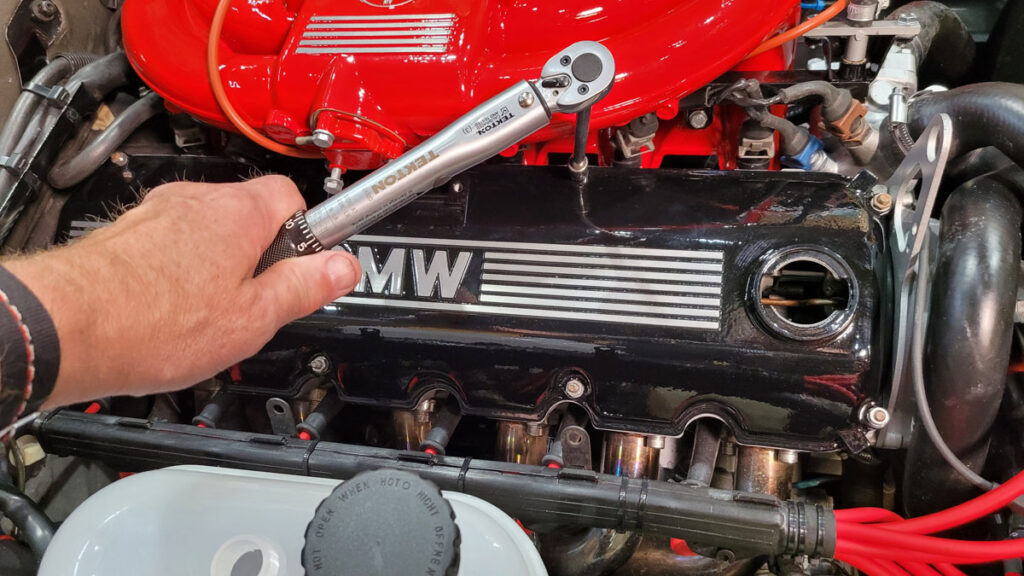
How to Replace A Leaking Valve Cover Gasket On A BMW 2-Valve 4-Cylinder or 6-Cylinder Engine
Stop Oil Leakage On Your Vintage BMW Engine By Replacing The Valve Cover Gasket
In most cases, a leaking valve cover gasket will cause engine oil to leak onto the passenger side of the cylinder head. Leakage onto the intake/driver side and the front/rear of the head is also possible. The leakage can also go into the spark plug cavities and onto the exhaust manifolds.
A heavy leak can continue down the side of the engine block and end up as drips on the ground. Not only is this messy and ugly, it can deteriorate the spark plug boots and wires. It will also leave unsightly stains on your driveway or garage floor. Often, owners “discover” the leakage once the oil is dripping onto the hot cylinder head and exhaust manifolds. This can cause a very distinct burning oil smell. Fortunately, replacement of the valve cover gasket (for the models covered here) is fairly easy and does not require any specialty tools.
This DIY tutorial will show how to replace the valve cover gasket on the vintage BMW 4 & 6 cylinder engines that have single overhead camshafts. This applies to practically every BMW produced up through the late ’80s / early ’90s with 4-cylinder or 6-cylinder engines.
Applicable US models:
1600, 1602, 2002, CS, Bavaria, 318i, 320i, 320is, 325i, 325is, 325ic, 325ix, 325e, 325es, 528e, 533i, 535i, 535is, 633csi, 635csi, L6, 733i, 735i, 735il and L7 – with chassis codes of 114, E3, E9, E10, E21, E23, E24, E28, E30, E32 and E34
Applicable US engine models/codes:
4-cylinder – M10
6-cylinder – M20, M30
This DIY will be performed on a 1987 325is with the M20B25 engine (M20 engine, 2.5 liter). The steps and photos are specific to the M20 engine. However, all of the models and engines listed above are similar and these general steps can be applied to all of these applications with minor revisions.
Required Parts:
Valve Cover Gasket set (for the applicable model being repaired)
Required Tools:
Standard Metric mechanic’s tool set with sockets and wrenches (10mm and 13mm being the most common sizes needed)
1/4” drive torque wrench
Gasket scraper
Parts cleaner, such as; Brake Parts Cleaner spray
Clean rags
Procedure:
- Note that the M30 6-cylinder engines have the engine air intake and Air Flow Meter (AFM) mounted toward the passenger side of the vehicle and over the valve cover. On these models, it is necessary to first remove the air filter box, AFM and intake boot in order to fully access the valve cover.
- Remove the valve cover to intake manifold support brace. Not all models will have this brace, or may have a brace of a different design.
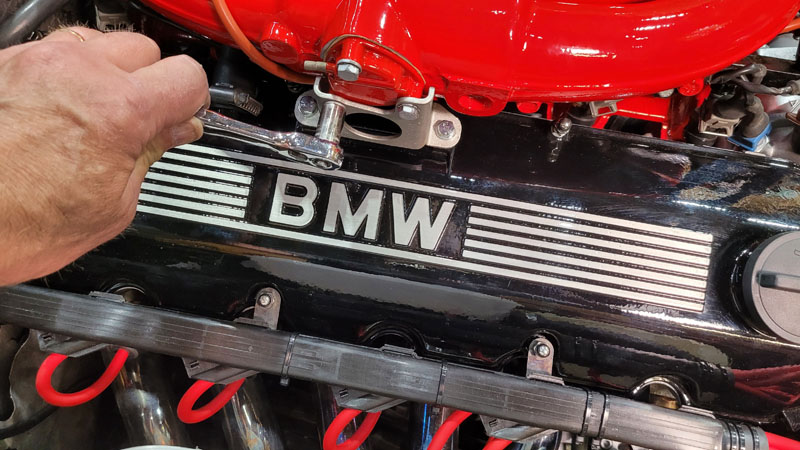
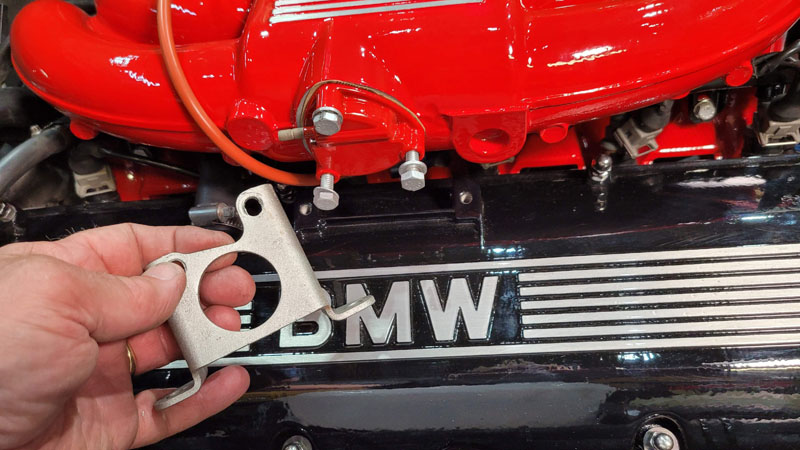
- Disconnect the valve cover breather hose. The hose may or may not have a hose clamp on it.
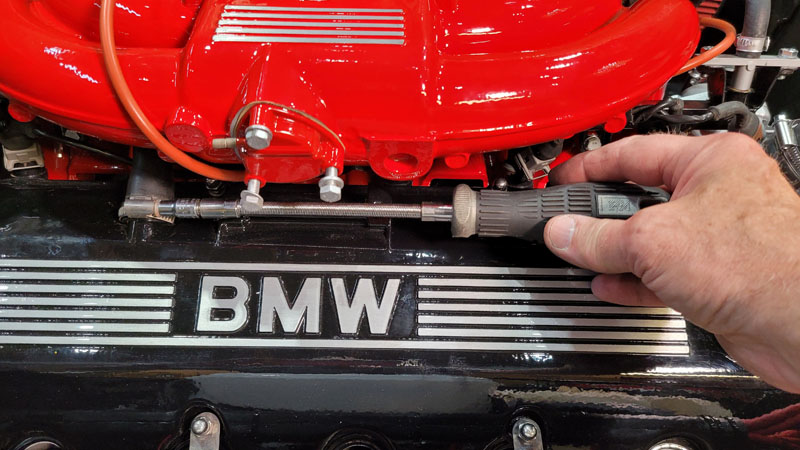

- Some models may have an additional bracket, toward the rear of the valve cover, that mounts the flywheel inductive pickup sensor connector harness plugs. If this is present, disconnect the harness plugs (noting which plugs are paired) and remove the bracket.
- The valve cover is now ready to be removed. Loosen and remove the valve cover securing nuts and flat washers. The nuts are 10mm headed hex nuts. Typically, you would use a 1/4″ drive short 10mm socket with an extension and a ratchet. Note that the valve cover shown has double nuts installed; the standard hex nut with a decorative acorn nut above it. Your application will likely only have the standard hex nuts.
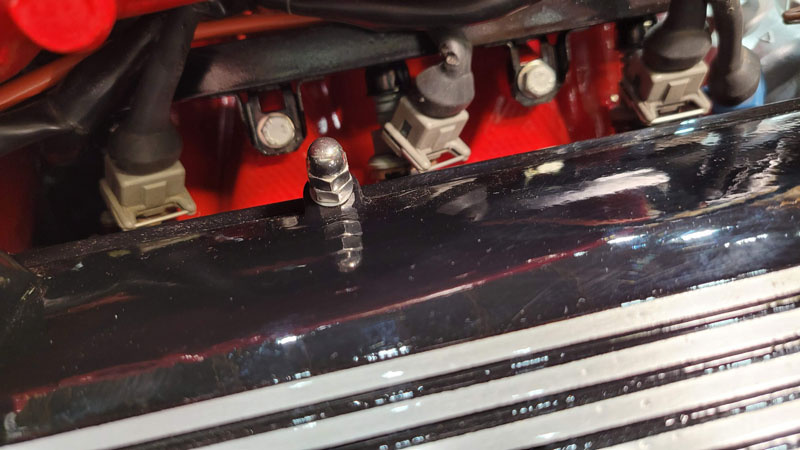
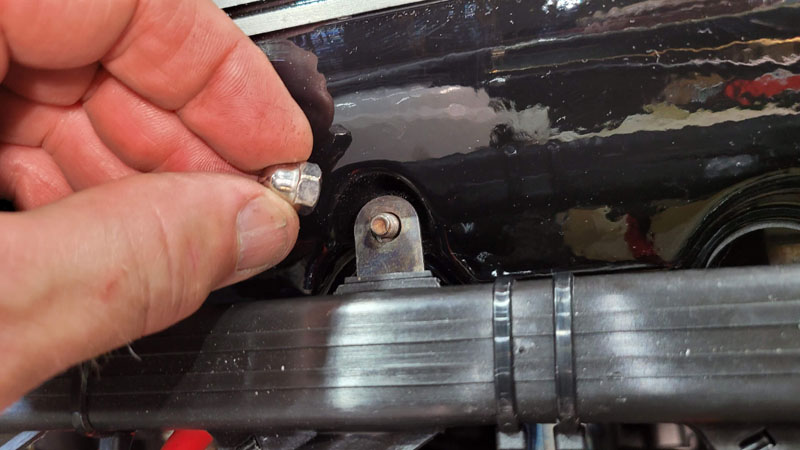
- Once the nuts and washers are removed list the valve cover up from the cylinder head. If the valve cover and gasket are stuck a bit, gently pry under an edge of the valve cover to free it. If the valve cover does not pop free with just gently prying, recheck that you have all of the securing nuts removed. Once the valve cover is removed, remove the gasket.

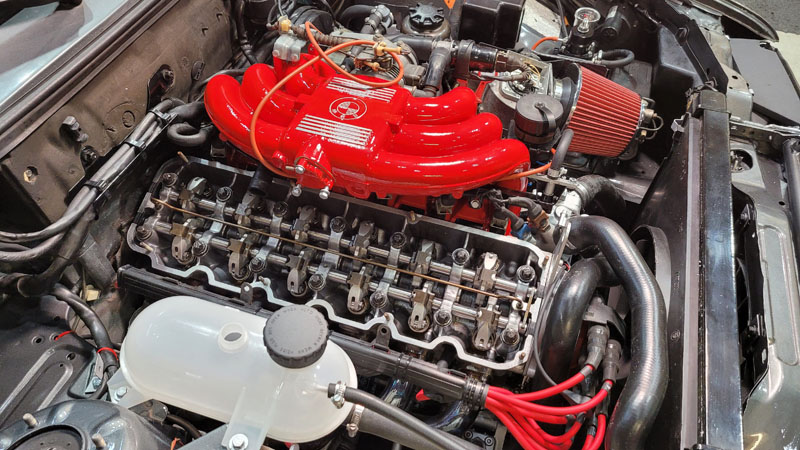
- On the M20 6-cylinder only (320/6, 323i, 325e/es, 325i,is,ix,ic, 525i, 528e), remove the four rocker shaft cut-out sealing plugs from the front and rear of the cylinder head.
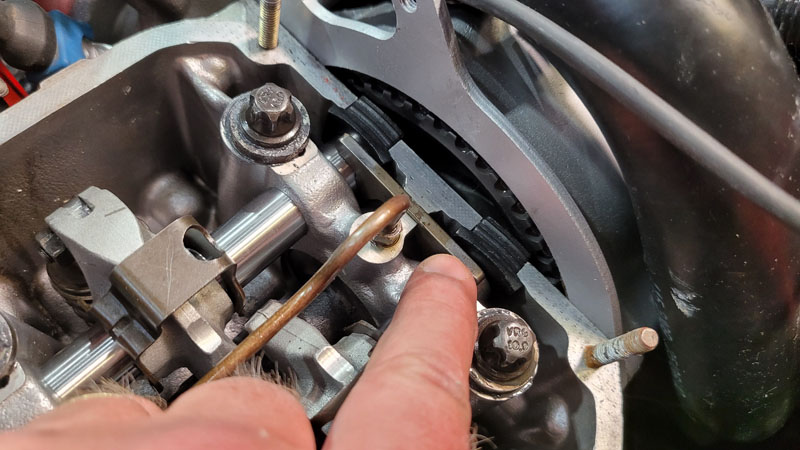
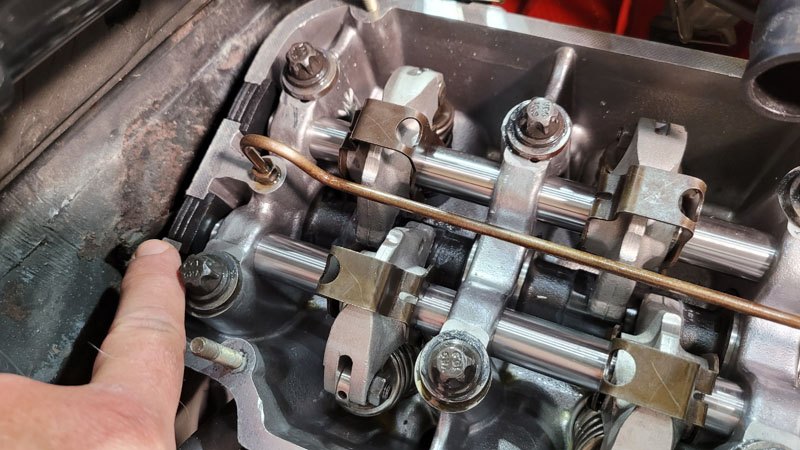
- Clean the cylinder head and valve cover gasket mounting surfaces. A gasket scraper may be required to remove stuck-on gasket material. Be careful to not scrape gasket material into the cylinder head. Once the gasket material is removed, use a clean rage and a degreaser cleaner (such as brake parts cleaner) to clean the valve cover and cylinder head surfaces. Keep cleaning until the rag runs clean after wiping.
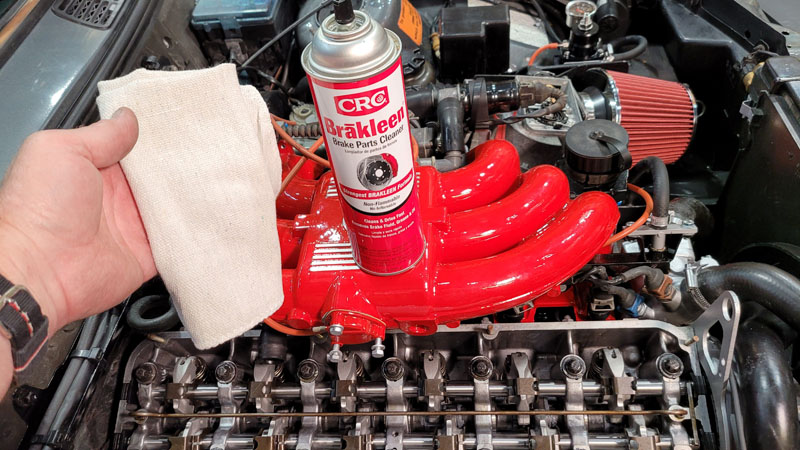
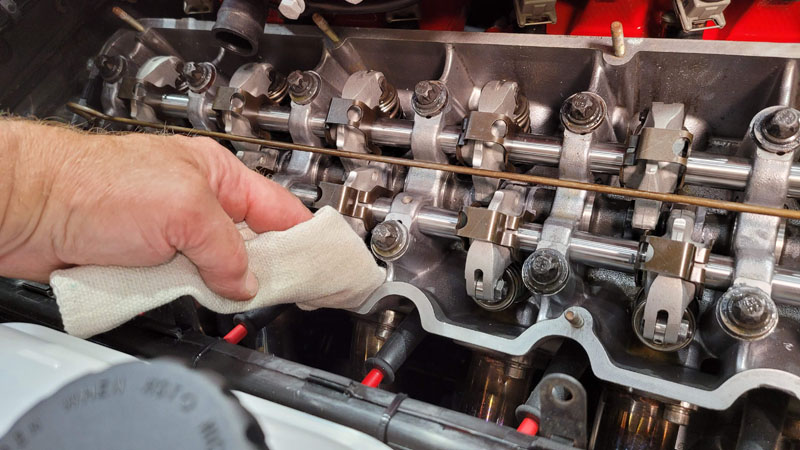
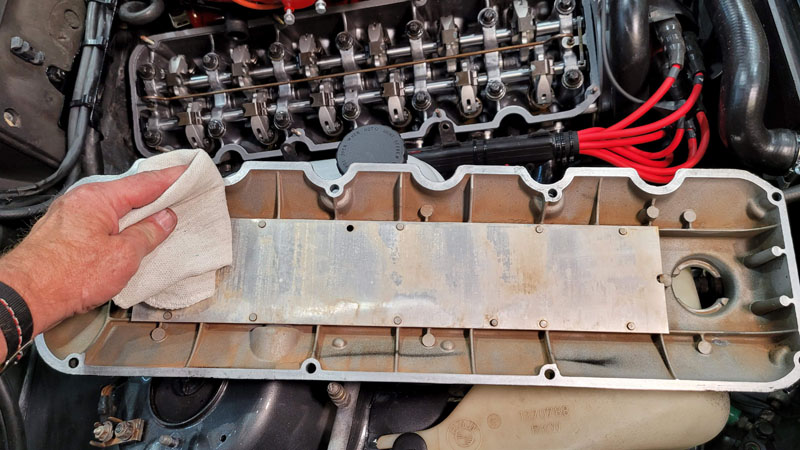
- On the M20 engines, install the four new rocker shaft cut-out plugs. Note that the flange on the plug installs to the inside of the cylinder head.
- Install the new valve cover gasket over the valve cover securing studs and to the cylinder head mating surface. NOTE: on the M10 4-cylinder and the M30 6-cylinder applications, apply a small dab of silicone gasket sealant to the two spots where the front timing cover meets the front of the cylinder head, prior to laying the gasket in place. Do not apply any sealant to the M20 6-cylinder applications.
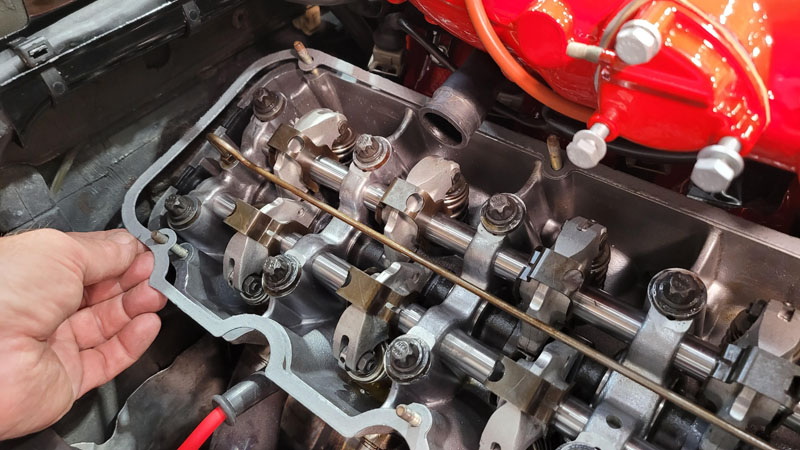
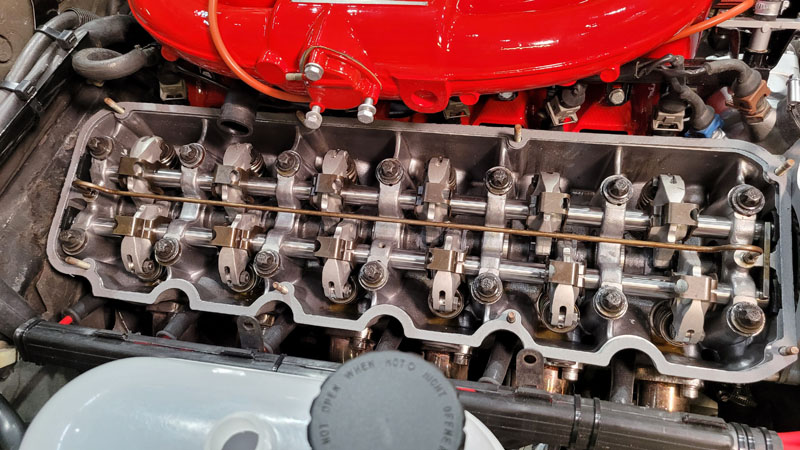
- Lower the valve cover down over the studs, unto the gasket and cylinder head. Make sure that it sits flat all the way around. If not, figure out what is interfering and take care of it (wires, or something). Do not force the valve cover down.
- On M20 and later M30 6-cylinder engines, install the spark plug wiring loon mounting tabs over the applicable lower valve cover studs.
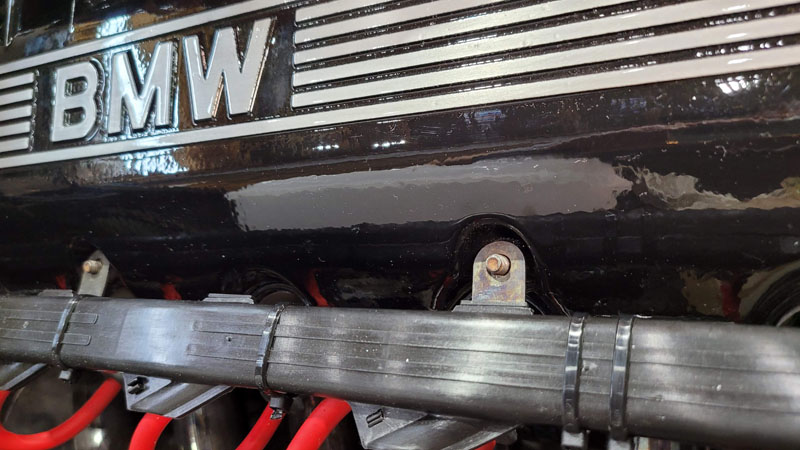
- Install the flat washers and nuts onto each stud.
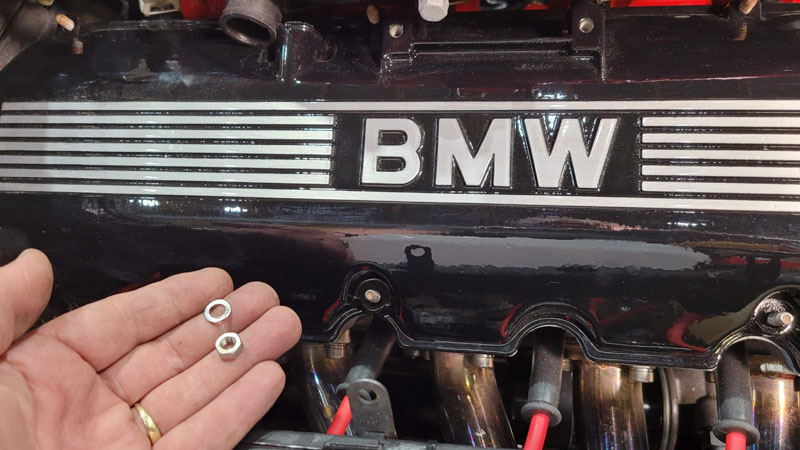
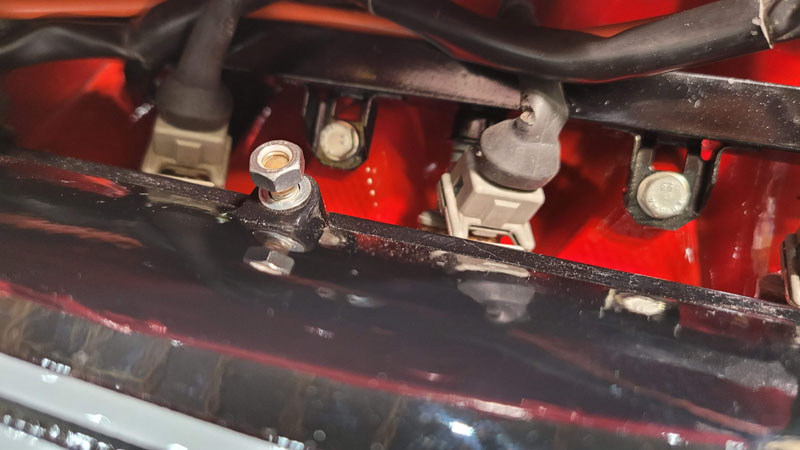
- Following the applicable BMW, Bentley Publishers, Haynes or Chilton service manual, torque the nuts, in order, to the recommended torque value. If no manual is available, start with the middle-upper nut and then go to the lower middle nut and proceed in an outward spiral pattern through all of the nuts. Torque for this M20 6-cylinder is 132-inlbs (+/- 5). Since all of the M10, M20 and M30 use the same 6mm studs and applicable nuts, this value can be used for all of these applications.
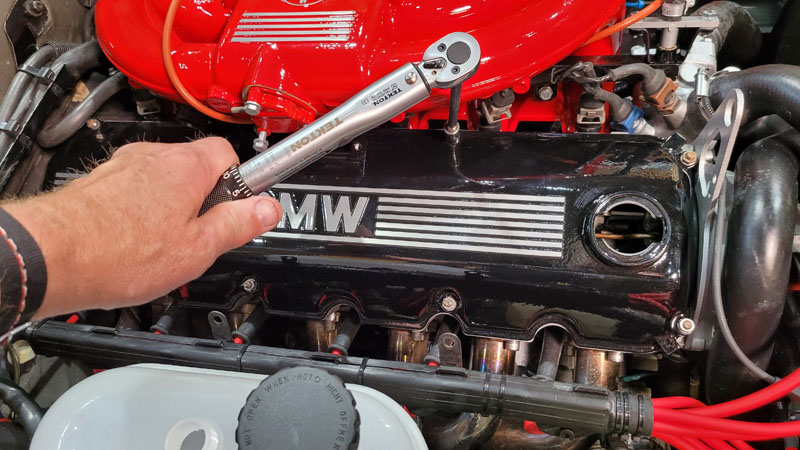
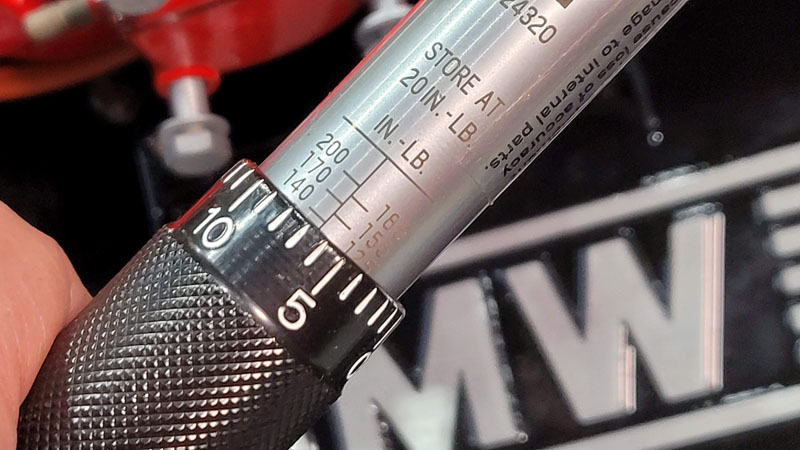
- Install the valve cover breather hose. If the hose did not have a hose clamp on it, we recommend that you install one, to prevent vacuum leaks.
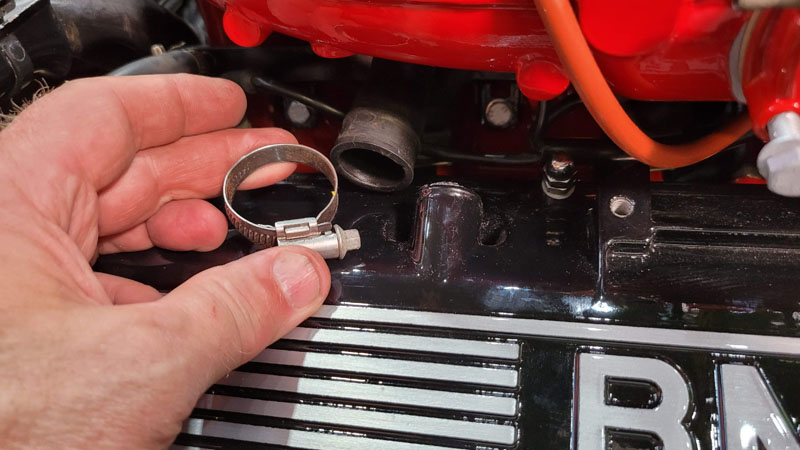
- Install the valve cover to manifold support bracket (M20) and/or any other brackets and harness connectors that were removed, as well as the AFM, air filter box and intake boots if an M30.
- As noted above, we are using stainless steel acorn nuts on this M20, to dress it up a bit. Since the valve cover studs are typically a bit too long for the closed acorn nuts, we have installed them on top of the standard nuts, which are also stainless steel.
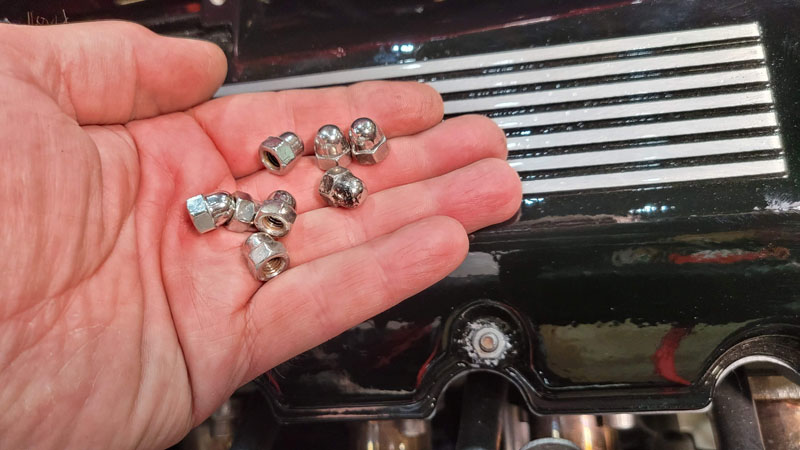
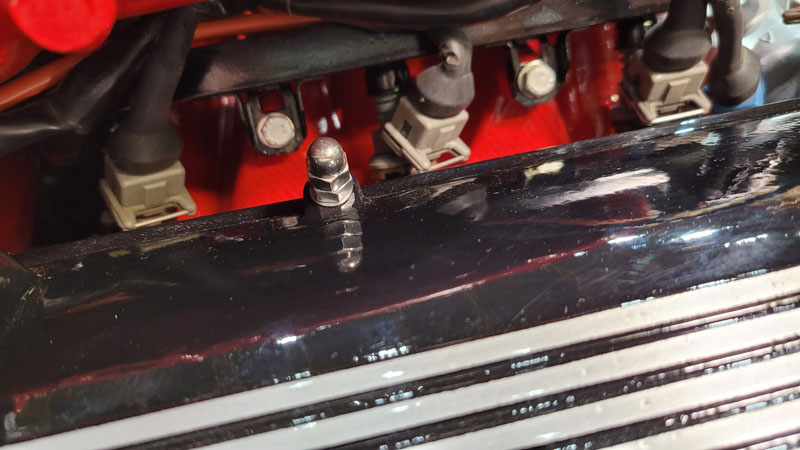

test comment